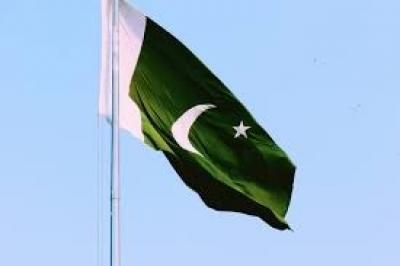World Bank slashes Pakistan’s GDP growth in half. In view of Pakistan’s deteriorating economic condition, the World Bank (WB) has slashed the country’s GDP growth to only 2 per cent in the current fiscal year, cutting its forecast by 50 per cent.
According to a WB’s latest Global Economics Prospects report, the 2022 devastating floods and slowdown in global growth have contributed to what it termed as “sharp, long-lasting slowdown”.
Due to the global growth frozen at only 1.7 per cent this year, Pakistan’s overall rate will also be much slower and will stand at only 2 per cent points from its June 2022 estimates.
“Pakistan’s economic output was not only declining itself but also bringing down the regional growth rate. Pakistan’s GDP growth rate may improve to 3.2 per cent in 2024, but that too would be lower than the earlier estimates of 4.2 per cent,” said the report.
“Policy uncertainty further complicates the economic outlook of Pakistan in addition to flood damages and resultant increase in poverty.”
The report further said that global growth was slowing sharply in the face of elevated inflation, higher interest rates, reduced investment, and disruptions caused by Russia’s ongoing invasion of Ukraine.
The current perilous financial situation of the country, coupled with shrinking foreign exchange reserves and towering current account deficits, have been severed by the last year’s floods, which not only claimed thousands if lives but also directly affected 15 per cent of the country’s total population, sunk one-third of the country under water and damaged widespread infrastructure.
“Recovery and reconstruction needs are expected to be 1.6 times the FY2022-23 national development budget. The flooding is likely to seriously damage agricultural production, which accounts to 23 per cent of GDP and 37 per cent of employment, disrupting the current and upcoming planting seasons pushing at least 9 million people into poverty,” said the WB report.
“Pakistan, with low foreign exchange reserves and rising sovereign risk, saw its currency depreciate by at least 14 per cent between June and December and its country risk premium rise by 15 per cent points over the same period. Pakistan’s consumer price inflation reached 24.5 per cent in December on an annual basis, recently coming off its highest rate since 1970s,” it added.
The dire situation in Pakistan is because of many factors that are interlinked. The country faces massive challenges on its economy, which is triggered by political uncertainty, lack of continued and consistent policy and the catastrophic floods.
Pakistan, like other countries of the South Asian region, are faced with food insecurity as well
For Pakistan, the challenges are at multi-levels of borderlines. Shrinking foreign exchange reserves, expanding external current account deficit and struggle to continue the IMF programme has damaged the country’s credit rating, which has further blossomed the fears of financial default and an economic meltdown.
The combination of limited foreign exchange buffers and widening external current account deficits encouraged several countries (including Bangladesh and Pakistan) to approach the International Monetary Fund to help bolster foreign exchange reserves and mitigate external financing pressures.
In parallel, governments have tightened fiscal policies and, in some cases, imposed import controls and food export bans.





